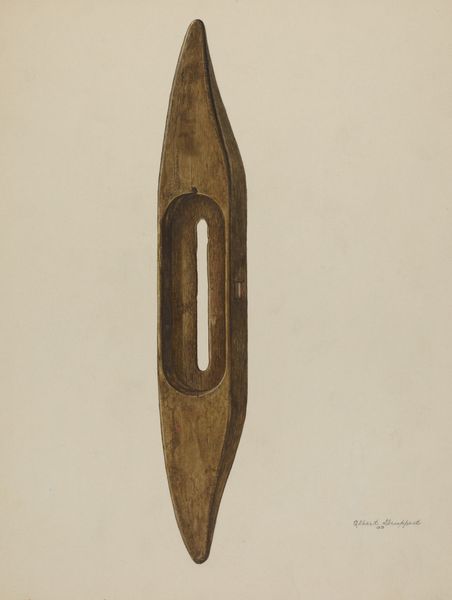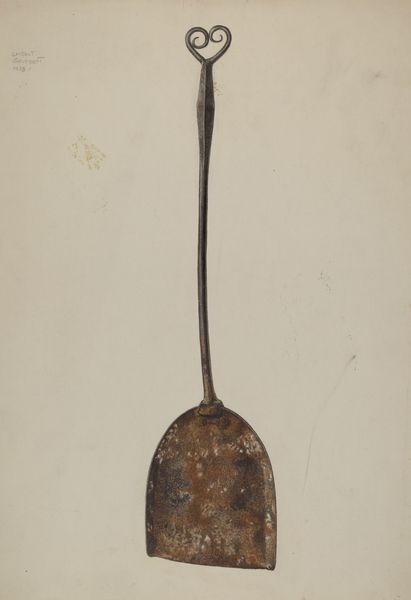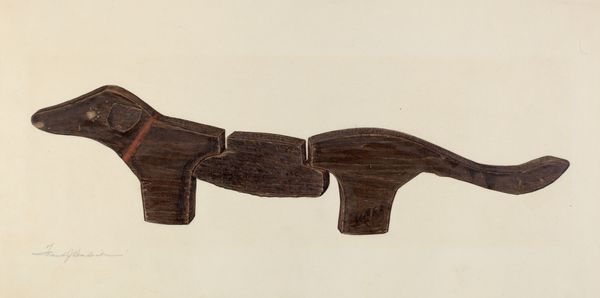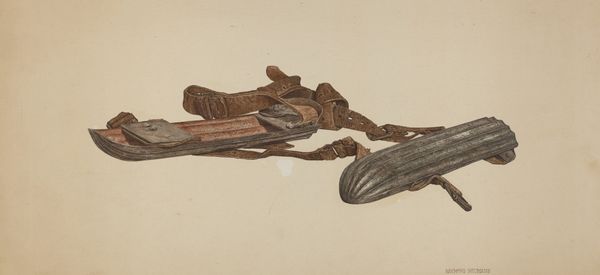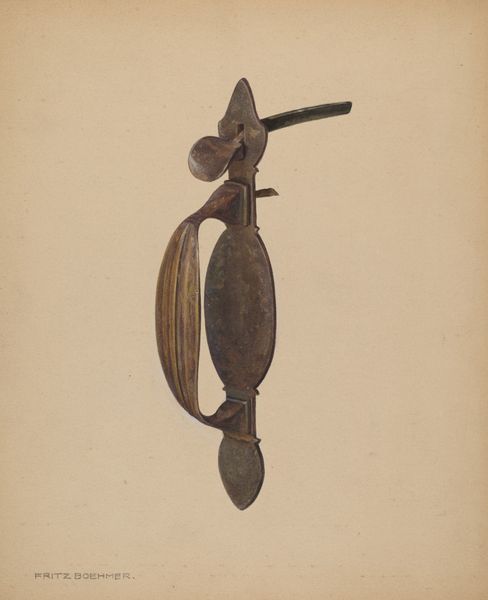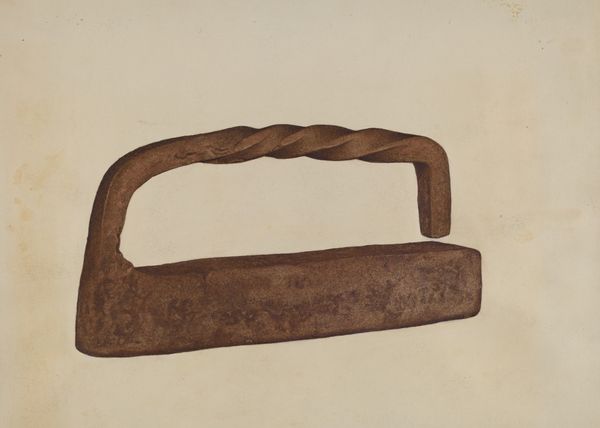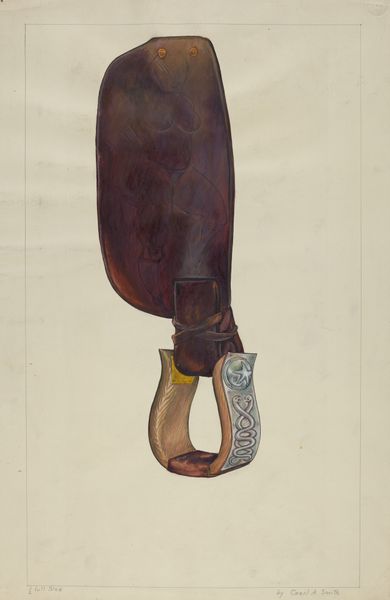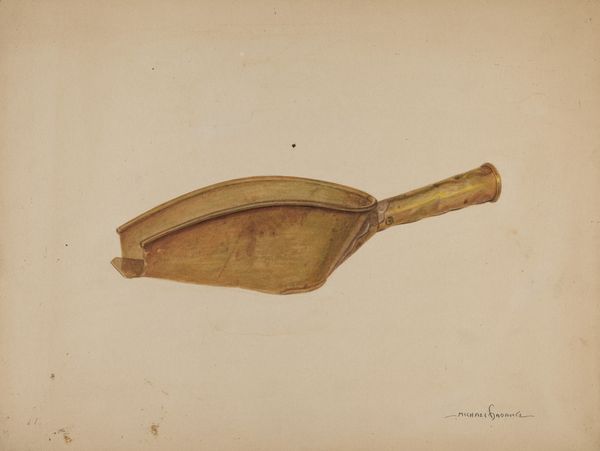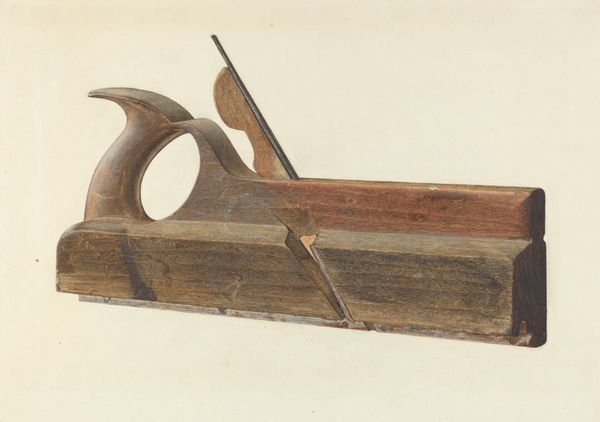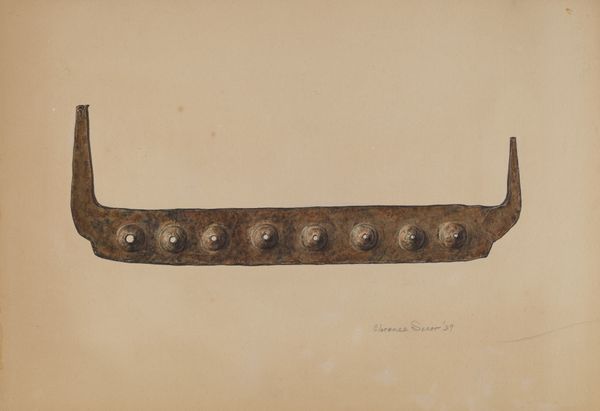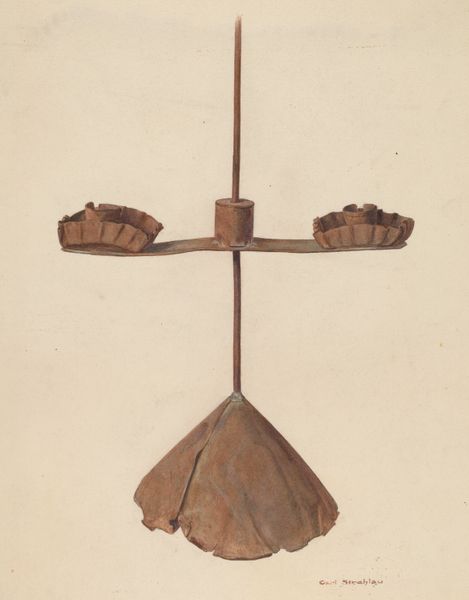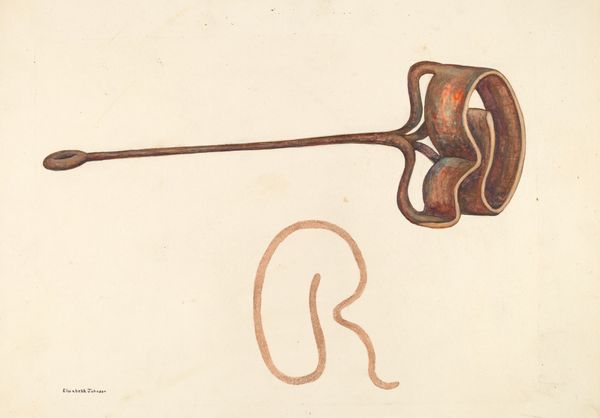
drawing, metal
#
drawing
#
metal
#
geometric
Dimensions: overall: 28.4 x 57.1 cm (11 3/16 x 22 1/2 in.) Original IAD Object: 55" wide; 12" high
Copyright: National Gallery of Art: CC0 1.0
Curator: The piece before us, rendered around 1940 by Joseph Glover, is a drawing that also incorporates metal; it depicts a weather vane. What impressions strike you initially? Editor: The subdued palette and the somewhat crude geometric design evoke a feeling of rustic Americana, almost like a folk-art artifact reclaimed from a forgotten barn. There's an understated quality to it. Curator: That’s perceptive. A weather vane, ostensibly functional, transforms into something almost totemic when viewed outside of its function. The arrow shape indicates direction, and one can imagine this symbol used throughout time, across different communities…What does this tell us about the image’s longevity? Editor: It highlights our human need for orientation, not just geographically but perhaps also symbolically. The material choice of metal underscores permanence, the wish to defy the transient nature of…weather. Do you think the stylized flower indicates anything beyond aesthetics? Curator: Precisely. The flower, often symbolic of growth and natural cycles, counterbalances the directional, assertive arrow. The pairing may speak to broader themes: human intention navigating the forces of nature. It's beautiful how everyday objects carry profound psychological and cultural meaning. Editor: Agreed. And understanding pieces like this weather vane – its form, function and material—we can start piecing together something larger about American social and industrial history. It points to our enduring reliance on natural resources and how humans continually refine designs, incorporating useful or appealing motifs from different communities and generations. It is interesting how a simple drawing may represent a larger scale of social exchanges. Curator: Yes. These exchanges leave visual clues, reminding us how material culture shapes the human experience across eras. Editor: Food for thought—both from an iconographical and a historical point of view.
Comments
No comments
Be the first to comment and join the conversation on the ultimate creative platform.
